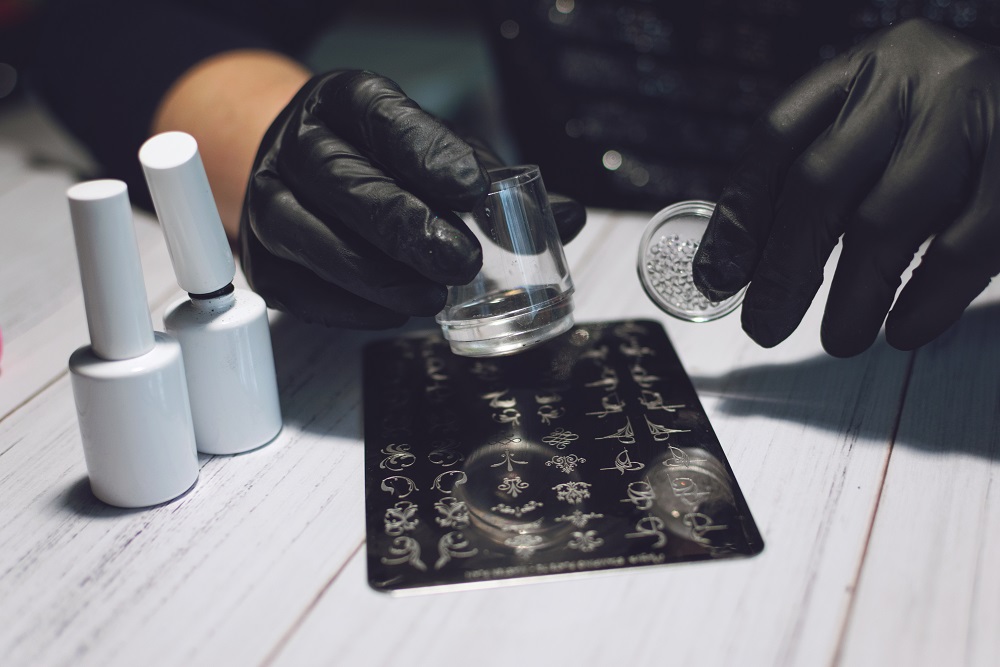
Nail stamping has emerged as a revolutionary technique in the realm of nail art, offering a quick and intricate way to achieve stunning designs. This innovative method has captured the imagination of nail enthusiasts worldwide, providing endless possibilities for creative expression. Let’s delve into some of the most popular nail stamping techniques that elevate nail art to new heights.
1. Classic Single-Color Stamping
The foundation of nail stamping lies in the classic single-color technique. This involves transferring a single design from a stamping plate onto the nail using a specially formulated nail polish. From delicate florals to geometric patterns, this technique allows for the creation of intricate designs with minimal effort, making it ideal for both beginners and experienced nail artists.
2. Layered Stamping for Depth
For a dimensional and eye-catching effect, layered stamping is the go-to technique. This involves stamping multiple colors or designs on top of each other, creating a layered effect that adds depth and complexity to the nail art. It’s a versatile method that can be used to achieve both subtle and bold designs, depending on the color palette and stamping plates chosen.
3. Gradient Stamping
Gradient stamping introduces a beautiful transition of colors within a single design. By applying different shades of nail polish to the stamping plate and blending them seamlessly, a gradient effect is achieved when transferred onto the nail. This technique opens up a world of possibilities for creating stunning ombre and multi-color designs that seamlessly flow across the nail surface.
4. Reverse Stamping for Intricate Details
For those seeking intricate detailing, reverse stamping is a game-changer. This technique involves stamping a design onto a stamper, coloring it in with various nail polishes, and then transferring the colored design onto the nail. The result is a meticulously detailed and colorful pattern that adds a touch of sophistication to any nail art.
5. Decal Stamping Art
Decal stamping takes the nail art game a step further by creating customized decals. After stamping a design onto a silicone mat, artists have the flexibility to fill in the design with various colors, creating a decal that can be applied to the nail surface. This technique allows for intricate and unique designs that may be challenging to achieve directly on the nail.
6. Negative Space Stamping
Embracing the modern trend of negative space, this technique combines stamped designs with unpainted areas of the nail, creating a chic and minimalist look. By strategically leaving portions of the nail bare, negative space stamping adds a contemporary twist to traditional designs, making a bold statement with simplicity.
7. Holographic Stamping
Holographic stamping incorporates holographic or chrome polishes to create dazzling, futuristic nail designs. The reflective quality of these polishes enhances stamped patterns, making them pop with an eye-catching, multidimensional effect.
8. Textured Stamping
Textured stamping involves using stamping polishes or powders that create a tactile effect on the nails. Whether opting for a velvety matte finish or raised embossed patterns, this technique adds an extra sensory dimension to nail art.
9. Glow-in-the-Dark Stamping
This playful and innovative technique uses special glow-in-the-dark polishes to create designs that light up in dim settings. It’s perfect for night events and adds a fun, mysterious twist to traditional nail stamping.
10. Metallic Foil Stamping
Combining stamping with metallic foils results in a luxurious, high-shine finish. By applying foil over stamped patterns, nail artists can achieve an elegant, gilded effect that stands out beautifully against any base color.
11. 3D Stamping
3D stamping takes traditional stamping to the next level by incorporating gel polishes or embossing powders to create raised, textured patterns. This technique adds depth and intricate detail, making nail art look more sculptural and refined.
12. Stamping with Glitter Accents
Adding a touch of glitter to stamped designs enhances their visual appeal, creating a sparkling and glamorous finish. This can be done by layering fine glitter over stamped patterns or using glitter stamping polishes.
Conclusion
Nail stamping techniques have revolutionized the world of nail art, providing both professionals and DIY enthusiasts with a versatile and accessible means of creating intricate and detailed designs. Whether opting for classic single-color stamping or exploring the depth of layered and gradient techniques, the artistry achievable through nail stamping knows no bounds. As this innovative trend continues to evolve, it’s clear that nail stamping is not just a technique; it’s a dynamic and ever-expanding avenue for unleashing creativity on the fingertips.
